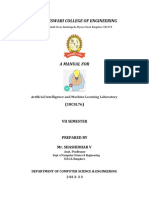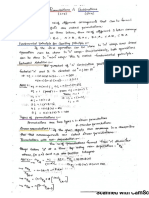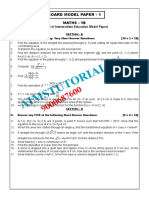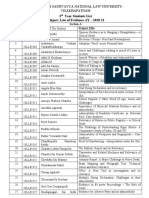0% found this document useful (0 votes)
22 views14 pagesML Lab Works
The document contains multiple Python programs implementing various machine learning algorithms including FIND-S, Candidate Elimination, Decision Trees, Linear Regression, Logistic Regression, K-Nearest Neighbors, and more. Each program is designed to perform specific tasks such as classification, regression, clustering, and exploratory data analysis using libraries like scikit-learn and pandas. Additionally, the document addresses error handling for file operations and provides visualizations for certain algorithms.
Uploaded by
Reddy. VeeraiahCopyright
© © All Rights Reserved
We take content rights seriously. If you suspect this is your content, claim it here.
Available Formats
Download as PDF, TXT or read online on Scribd
0% found this document useful (0 votes)
22 views14 pagesML Lab Works
The document contains multiple Python programs implementing various machine learning algorithms including FIND-S, Candidate Elimination, Decision Trees, Linear Regression, Logistic Regression, K-Nearest Neighbors, and more. Each program is designed to perform specific tasks such as classification, regression, clustering, and exploratory data analysis using libraries like scikit-learn and pandas. Additionally, the document addresses error handling for file operations and provides visualizations for certain algorithms.
Uploaded by
Reddy. VeeraiahCopyright
© © All Rights Reserved
We take content rights seriously. If you suspect this is your content, claim it here.
Available Formats
Download as PDF, TXT or read online on Scribd
/ 14

































































































